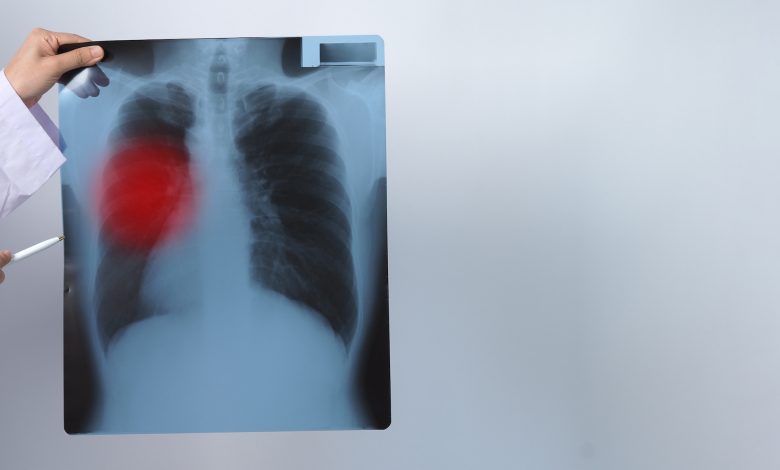
Scientists identify protein that causes lung cancer
اكتشاف البروتين المسبب لسرطان الرئة
VCU
Scientists at VCU Massey Cancer Center have identified a protein that operates in tandem with a specific genetic mutation to spur lung cancer growth and could serve as a therapeutic target to treat the disease.
Mutations in the p53 gene are found in more than half of all cancers, but it remains difficult to effectively target the gene with drugs even decades after its discovery. Though previous research has shown that p53 acts as a tumor suppressor and initiates cancer cell death in its natural state, a new study led by Sumitra Deb, Ph.D., suggests that gain-of-function (GOF) mutations — a type of mutation where the changed gene has an added function — turn p53 into an oncogene, causing cells to replicate uncontrollably and contribute to cancer development.
Recently published in Nature Communications, the researchers determined that mutant p53 genes are empowered by a specific protein, PLK3, to copy their genetic code and promote tumor cell proliferation through a process called transactivation.
Using preclinical models of lung cancer driven by p53 GOF mutations, Deb and his research team discovered that PLK3 activates an amino acid called serine 20 (S20), a cellular building block they found to play an important role in cancer cell replication.
By inhibiting PLK3 in GOF p53 mutant cells, they observed a decrease in the function of S20 along with overall reductions in transactivation and tumor cell formation.
Deb’s team will continue to explore the potential for PLK3 inhibitors to be effective drugs in the treatment of lung cancer and potentially other forms of disease with the same genetic mutation.
قنا
واشنطن: اكتشف علماء أمريكيون في «مركز الأبحاث البيولوجي ماسي» لعلاج السرطان في الولايات المتحدة الأمريكية بروتينًا يعمل جنبًا إلى جنب مع طفرة جينية محددة لتحفيز نمو سرطان الرئة، إلى جانب أن هذا البروتين يوضح الأهداف الرئيسية لكيفية علاج مرضى السرطان.
ووفقًا للتجارب السريرية التي قام بها الفريق العلمي على مجموعة من مرضى سرطان الرئة لديهم تلك الطفرة والبروتين، وجد الفريق أن هناك طفرات اكتساب الوظيفة، وهي نوع من الطفرات التي للجين المتغير فيها وظيفة إضافية لها القدرة على تحويل جينات تسمى « بي 53» إلى جينات ورميّه، وبالتالي تتسبب في تكاثر الخلايا بشكل لا يمكن السيطرة عليه والمساهمة في تطور السرطان.
كما حدد الباحثون في هذه الدراسة الجديدة الجينات « بي 53» الطافرة التي يتم تمكينها بواسطة بروتين معين وهو « بي ال كي 3»، لنسخ شفرتها الجينية وتعزيز تكاثر الخلايا السرطانية من خلال عملية تسمى (المعاملات)، بالإضافة إلى أن هذا البروتين ينشط حمضًا أمينيًا يسمى « أس20»، وهو لبنة خلوية تلعب دورًا مهمًا في تكاثر الخلايا السرطانية.



